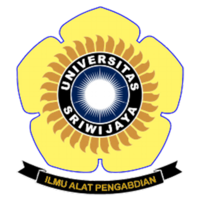Keanekaragaman Semut (Hymenoptera: Formicidae) di Kawasan Cagar Biosfer Giam Siak Kecil - Bukit Batu Riau
Abstract
Ruslan H. 2019. Ant species (Hymenoptera: Formicidae) composition and diversity near area of giam siak kecil – Bukit Batu Nature Conservation Riau. In: Herlinda S et al. (Eds.), Prosiding Seminar Nasional Lahan Suboptimal 2019, Palembang 4-5 September 2019. pp. 264-269. Palembang: Unsri Press.
There is no published research on the composition and diversity of ants (hymenoptera: Formicidae) around the Giam Siak Kecil Bukit Batu Biosphere Conservation, Riau. In general, ants act as predators, scavengers, herbivores, detritivores, and interact with other organisms such as plants or other insects. In addition, ants are one of the bioindicators of environmental changes. The purpose of this study was to determine the composition and diversity of ants around the area of Giam Siak Kecil Bukit Batu Riau Biosphere Conservation. This research was carried out on May 5 to 11, 2018. The study was conducted using a pitfall trap method that was placed randomly. The study was conducted in two different habitats, namely the core zone (secondary forest), and industrial plantation forest (HTI). The results found 15 species and 179 individuals in the core zone, while 14 species and 126 individuals found in HTI. The similarity index of ant composition is <50%, which means there is no similarity in ant species. The diversity index of ants in the core zone is classified as low, while in the HTI is classified as moderate. The evenness index in the core zone is low while in HTI is high. Ants with high individuals number that were found in the core zone is Anoplolepis gracilipes species while in HTI come from Odontoponera denticulata species. Abiotic factors in two habitats are almost the same, except for soil texture specifically sand is higher in secondary forests.
There is no published research on the composition and diversity of ants (hymenoptera: Formicidae) around the Giam Siak Kecil Bukit Batu Biosphere Conservation, Riau. In general, ants act as predators, scavengers, herbivores, detritivores, and interact with other organisms such as plants or other insects. In addition, ants are one of the bioindicators of environmental changes. The purpose of this study was to determine the composition and diversity of ants around the area of Giam Siak Kecil Bukit Batu Riau Biosphere Conservation. This research was carried out on May 5 to 11, 2018. The study was conducted using a pitfall trap method that was placed randomly. The study was conducted in two different habitats, namely the core zone (secondary forest), and industrial plantation forest (HTI). The results found 15 species and 179 individuals in the core zone, while 14 species and 126 individuals found in HTI. The similarity index of ant composition is <50%, which means there is no similarity in ant species. The diversity index of ants in the core zone is classified as low, while in the HTI is classified as moderate. The evenness index in the core zone is low while in HTI is high. Ants with high individuals number that were found in the core zone is Anoplolepis gracilipes species while in HTI come from Odontoponera denticulata species. Abiotic factors in two habitats are almost the same, except for soil texture specifically sand is higher in secondary forests.
Keywords: ants, composition, giam siak kecil bukit batu biosphere conservation, species diversity
Full Text:
PDFArticle Metrics
Abstract view : 618 timesPDF - 830 times
Refbacks
- There are currently no refbacks.

